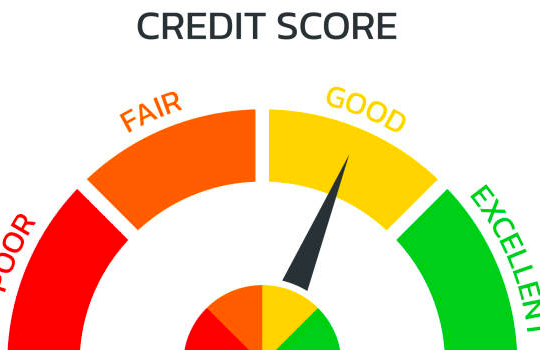For young first-time investors, the best asset allocation plan would typically include a mix of equities and bonds. Equities provide potential for higher returns but also come with higher risk, while bonds offer lower returns but are considered a safer investment. A common rule of thumb for asset allocation is to subtract your age from 100 and allocate that percentage to equities, with the remaining percentage going to bonds. However, it’s important to consult with a financial advisor and consider your individual risk tolerance, investment goals, and time horizon before making any investment decisions.
Introduction
Investing can be a daunting task, especially for young first-time investors. With so many investment options available, it’s easy to feel overwhelmed and unsure of where to start. However, creating a smart investment plan is essential for achieving financial goals and building long-term wealth. One important aspect of creating an investment plan is determining the appropriate asset allocation. In this article, we will discuss the best asset allocation for young first-time investors, including the role of equities and bonds, how to determine risk tolerance and investment goals, and the importance of consulting with a financial advisor.
The importance of creating a smart investment plan
Creating a smart investment plan is crucial for achieving financial goals and building long-term wealth. A well-designed investment plan can help investors navigate market fluctuations, mitigate risk, and optimize returns. By setting clear investment objectives, determining risk tolerance, and developing an appropriate asset allocation strategy, investors can create a plan that aligns with their financial goals and values. A smart investment plan also takes into account the investor’s time horizon and life stage, as well as their unique financial circumstances. With a solid investment plan in place, young first-time investors can feel more confident in their investment decisions and work towards achieving their financial goals.
Understanding asset allocation
Asset allocation refers to the process of dividing an investment portfolio among different asset classes, such as stocks, bonds, and cash equivalents. The goal of asset allocation is to balance risk and return by diversifying investments across different asset classes that have different risk and return characteristics.
Asset allocation is an important concept in investment planning because it can have a significant impact on an investor’s overall investment performance. Studies have shown that asset allocation is the most significant determinant of an investment portfolio’s performance. A well-diversified portfolio that is properly allocated among different asset classes can help to minimize risk while maximizing returns over the long term.
There are various approaches to asset allocation, but the most common involve balancing the percentage of investments in different asset classes based on an investor’s risk tolerance, investment goals, and time horizon. By determining an appropriate asset allocation that aligns with an investor’s goals and risk tolerance, young first-time investors can build a diversified investment portfolio that can weather market fluctuations and help them achieve their financial objectives.
The best asset allocation for young first-time investors
The best asset allocation for young first-time investors generally involves a mix of equities and bonds. Equities, or stocks, offer the potential for higher returns over the long term but also come with higher risk. Bonds, on the other hand, offer lower returns but are generally considered to be a safer investment.
A common rule of thumb for determining asset allocation is to subtract an investor’s age from 100 and allocate that percentage to equities, with the remaining percentage going to bonds. For example, a 25-year-old investor might allocate 75% of their portfolio to equities and 25% to bonds.
The role of equities and bonds in asset allocation
Equities and bonds play different roles in asset allocation. Equities, or stocks, are generally considered to be a higher-risk investment that offer the potential for higher returns over the long term. However, they can also be subject to greater volatility and short-term fluctuations.
Bonds, on the other hand, are generally considered to be a lower-risk investment that offer more stable returns but with lower potential for growth. Bonds are typically less volatile than equities and can provide a steady stream of income through interest payments.
When allocating assets, a mix of equities and bonds can help to balance risk and reward in an investment portfolio. The exact mix will depend on an investor’s risk tolerance and investment goals, as well as current market conditions.
The impact of time horizon on asset allocation
Time horizon, or the length of time an investor plans to hold an investment, can have a significant impact on asset allocation. In general, investors with a longer time horizon may be able to tolerate more risk and may be more willing to invest in equities or other higher-risk investments in order to potentially achieve higher returns over the long term.
For young first-time investors who have a longer time horizon until retirement, allocating a higher percentage of their portfolio to equities may be appropriate. This is because equities tend to have higher potential for long-term growth, which can help young investors build wealth over time.
On the other hand, investors with a shorter time horizon may want to allocate a larger percentage of their portfolio to bonds or other more conservative investments in order to preserve capital and reduce risk. This is because there is less time to recover from potential market downturns or fluctuations.
Conclusion
In conclusion, creating a smart investment plan is crucial for young first-time investors who want to build wealth and achieve their financial goals over the long term. Asset allocation plays a key role in this process, as it helps investors to balance risk and reward in their investment portfolios.
Young first-time investors should consider a mix of equities and bonds in their asset allocation, with the exact mix depending on individual circumstances, risk tolerance, and investment goals. Time horizon is also an important consideration when determining asset allocation, as investors with a longer time horizon may be able to tolerate more risk and invest in equities for potentially higher returns.
Consulting with a financial advisor can be a valuable step for young first-time investors, as it can provide guidance on how to develop a comprehensive investment plan that aligns with their individual circumstances and goals. By taking a disciplined and strategic approach to investing, young first-time investors can set themselves up for long-term financial success.
Also Read:
- Investment Taxation: Understanding Capital Gains, Dividends, and More
- The Impact Of Inflation On Investments
- The Future of Taxation: Trends, Challenges, and Opportunities Ahead
- Tax Planning Strategies for Small Business Owners and Individuals




